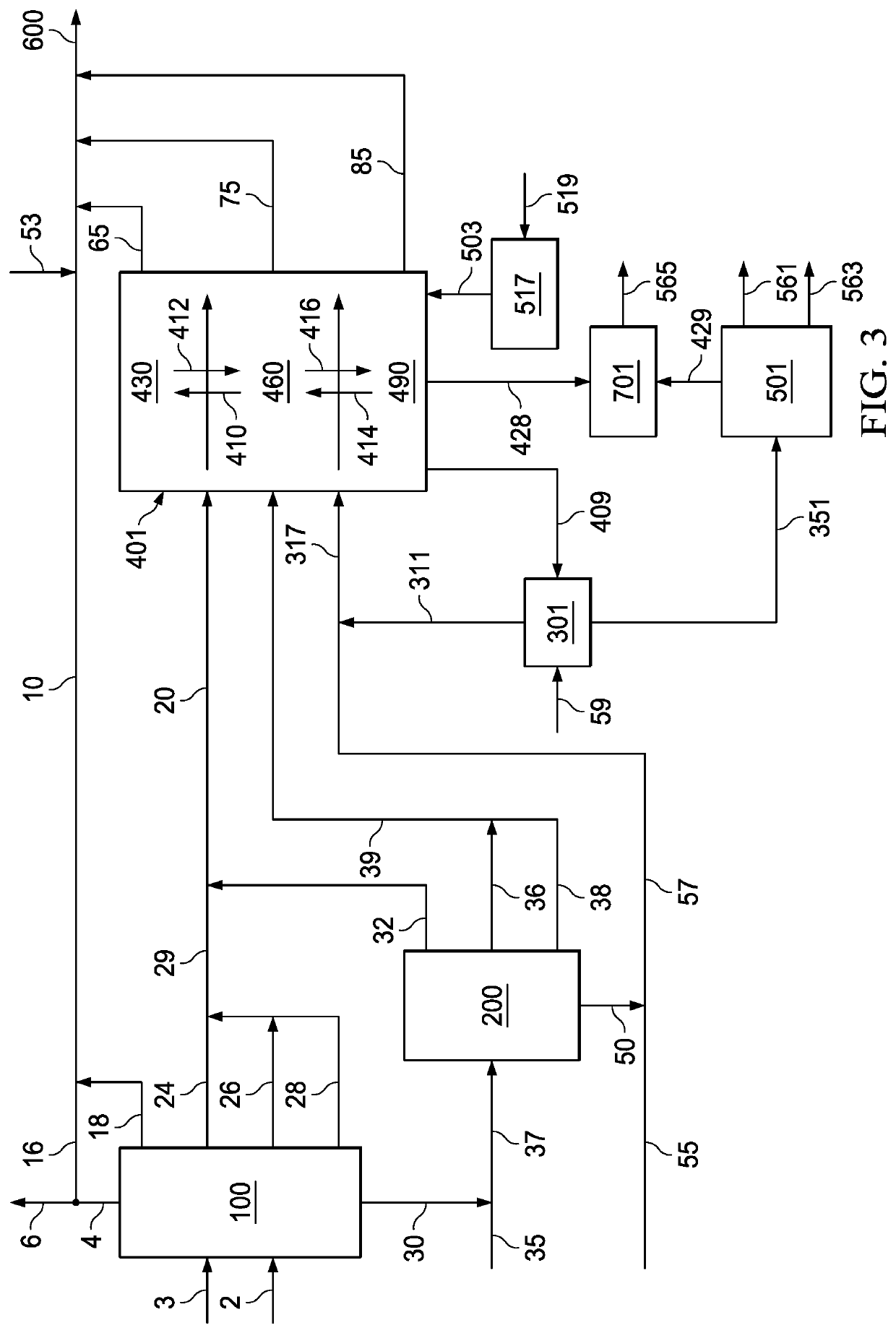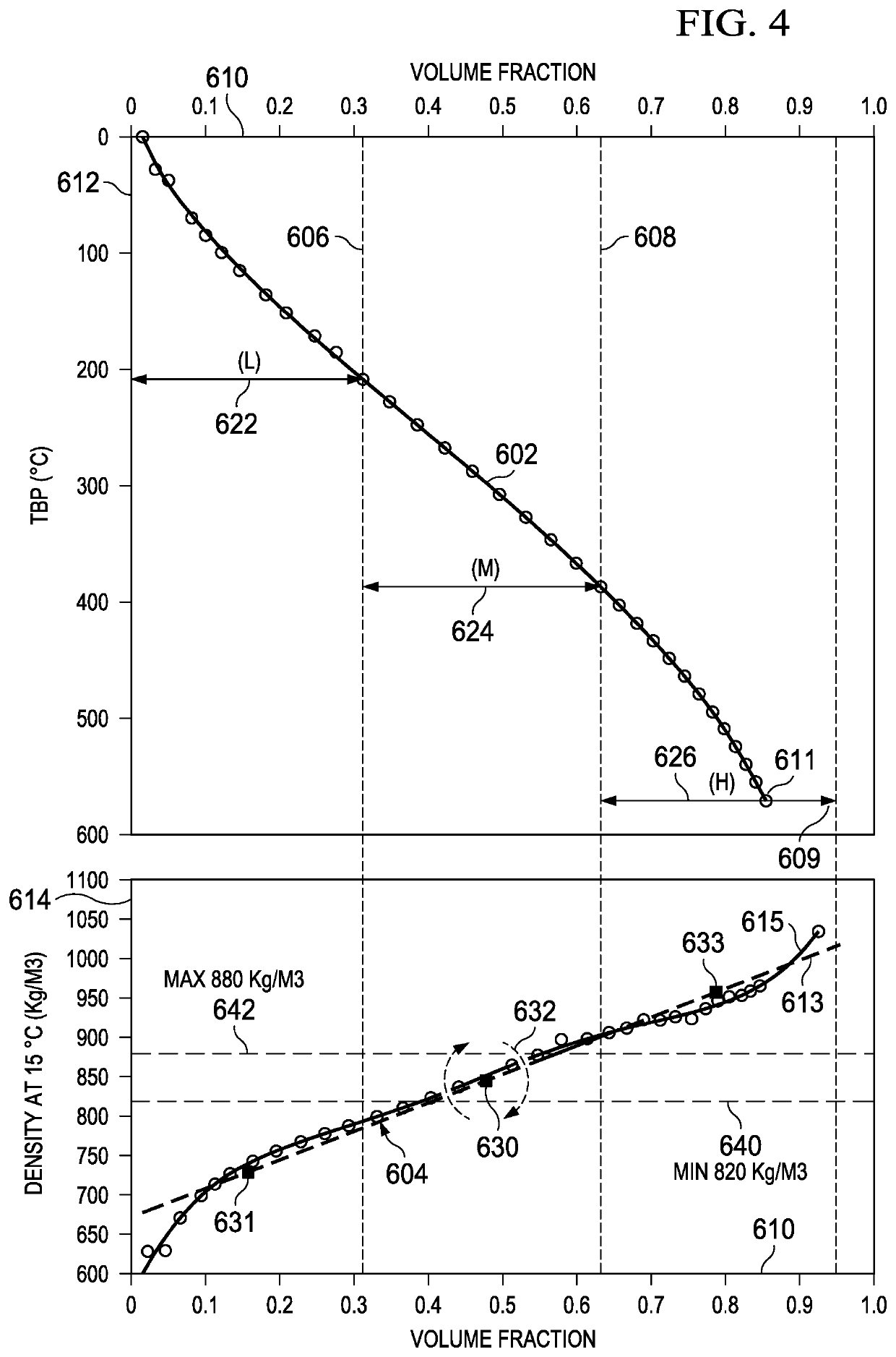Fuel compositions from light tight oils and high sulfur fuel oils
a technology of light-tight oil and composition, which is applied in the direction of liquid fuel engines, machines/engines, combustion gas production, etc., can solve the problems of operating and investment cost challenges, conventional refineries also face processing problems with light-tight oil, and other problems, to achieve the effect of low cost, low cost and cost-effectiveness
- Summary
- Abstract
- Description
- Claims
- Application Information
AI Technical Summary
Benefits of technology
Problems solved by technology
Method used
Image
Examples
Embodiment Construction
[0035]This invention provides process for conversion of various hydrocarbonaeous feeds from sources other than conventional crude oils, either alone or combined with conventional feeds, to form a fuel which has wide range of hydrocarbons. In variations, fuels formed by light tight oil feed and high sulfur fuel oil feeds have a wide range of hydrocarbons comprising those from the lowest boiling with said light tight oil forming said fuel up to the maximum boiling point of a hydroconverted liquids derived from high sulfur fuel oil to form said fuel.
[0036]In one embodiment, one or more high sulfur fuel oils are fed to a residue hydro-conversion zone and contacted with hydrogen in presence of catalyst at residue hydroconversion conditions in an ebullated-bed reactor to form (1) hydroconversion reactor effluent which is separated into hydroconverted product liquids, purge gases comprising hydrogen and sulfur and (2) unconverted oils which are directed to solvent separation. Such unconver...
PUM
 Login to View More
Login to View More Abstract
Description
Claims
Application Information
 Login to View More
Login to View More - R&D
- Intellectual Property
- Life Sciences
- Materials
- Tech Scout
- Unparalleled Data Quality
- Higher Quality Content
- 60% Fewer Hallucinations
Browse by: Latest US Patents, China's latest patents, Technical Efficacy Thesaurus, Application Domain, Technology Topic, Popular Technical Reports.
© 2025 PatSnap. All rights reserved.Legal|Privacy policy|Modern Slavery Act Transparency Statement|Sitemap|About US| Contact US: help@patsnap.com



